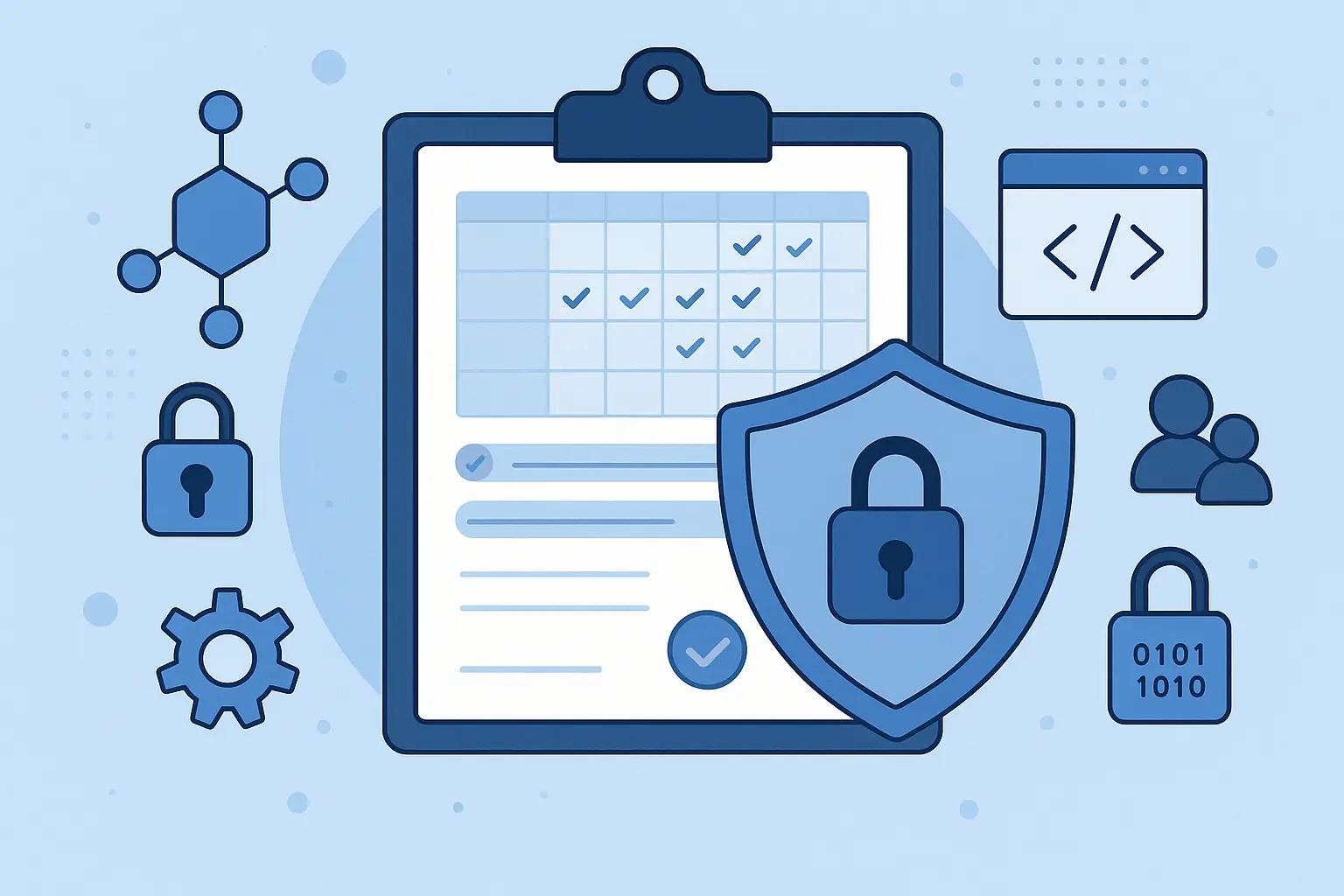Are you ready to future proof your business? To stay ahead, businesses need to keep up with new technology, but it can feel overwhelming with so many tools constantly emerging. That’s where technology management solutions come in. They simplify tech for your business, ensuring all systems run smoothly, saving you time and cutting costs. Whether you’re a startup or a large company, effective tech management can significantly impact your operations. In this article, we’ll break down what technology management solutions are, why they matter, and how they can optimize your business.
What Are Technology Management Solutions?
Technology management solutions refer to the strategic planning, implementation, and optimization of technology to align with business goals. It includes many different services and tools, like managing software, keeping an eye on hardware, protecting against cyber threats, using cloud technology, managing IT systems, and more.
Essentially, these solutions allow businesses to manage their technology investments more effectively, ensuring that all digital tools and systems are working harmoniously toward overall business objectives. By integrating technology management solutions, companies can:
- Improve operational efficiency.
- Enhance security and data management.
- Increase productivity through automation.
- Gain better control over technology budgets and investments.
A glitchy network, outdated hardware, weak security, or lack of data backups can bring even the most successful and established businesses to a halt, according to Gravity Systems. Smaller businesses should make smart choices about the IT support and infrastructure they require—and who they trust to handle these critical matters. Now, let’s tackle the benefits of technology management solutions in detail below.
Key Benefits of Technology Management Solutions
Businesses must realize the integral role of technology management solutions in attaining overall goals. Being aware of these advantages can help you make a more informed buying decision to ensure you get your investment’s worth.
1. Enhanced Operational Efficiency
A key benefit of technology management solutions is improved business efficiency. Exceptional IT services include smooth onboarding, access to top-tier engineering talent, and outstanding support, such as what Tech Keys provides. Efficient data backup, recovery, and minimizing downtime are also critical for operational success.
Upgrading your IT setup, automating tasks, and integrating systems can significantly reduce manual work, allowing your team to focus on higher-priority tasks. For instance, automation software handles repetitive tasks like data entry, freeing up time for more valuable work. Centralized systems ensure smooth information flow between departments, cutting down on delays and
2. Improved Security
Cybersecurity threats are always changing, and businesses need to stay alert. A cybersecurity report predicts that cybercrime costs will hit $9.5 trillion in 2024 and surpass $10.5 trillion by 2025. A good technology management solution helps protect your business from dangers like data breaches, viruses, and phishing scams.
Technology management ensures your systems receive regular security updates, checks for threats, and uses advanced methods to protect critical data. This proactive approach helps prevent costly data breaches and protects your company’s reputation.
3. Cost Savings
Effective technology management solutions can significantly reduce costs by eliminating redundant technologies, optimizing resources, and improving system performance. These solutions help cut expenses like excessive software licensing fees and energy waste from outdated hardware.
Cloud solutions and virtualization further enhance cost savings by allowing businesses to scale operations using virtual resources instead of investing heavily in physical infrastructure. With cloud services, companies can access computing power, storage, and software on demand, paying only for what they use, while virtualization maximizes resource usage by operating several virtual machines on a single server. To maximize these benefits, implementing effective cloud cost optimization strategies ensures that businesses minimize unnecessary expenditures while maintaining performance and scalability.
4. Better Decision-Making Through Data Management
Data is vital for any business. When managed well, it helps businesses make better decisions. Technology management solutions give businesses the tools to collect, analyze, and understand data. Businesses can make quicker and smarter choices that help them grow and make more money. For example, data analytics tools can monitor customer behavior, track sales trends, and identify inefficiencies in workflows, helping businesses optimize their processes.
5. Scalability
As businesses grow, their technology needs to grow, too. Technology management solutions help businesses expand without interrupting their day-to-day work. Whether they add more users, increase cloud storage, or add new software, these solutions ensure that businesses can quickly adjust to new demands. Also, scalability is essential for businesses operating in fast-paced industries or those planning for long-term growth.
How To Optimize Your Business With Technology Management Solutions
Now that we’ve covered why technology management solutions are important and how they help, let’s take a look at how you can put them to use in your business. Here are steps to optimize your business with these solutions:
1. Assess Your Current Technology
The first step is to examine your current technology. Check your hardware, software, and IT systems to identify any issues, duplicate tools, or outdated equipment. This review helps you assess what’s working, what’s not, and areas for improvement, setting a clear foundation for future upgrades or changes.
Once you’ve completed the review, prioritize your technology needs based on your business objectives. Identify which systems require immediate attention, such as outdated security software or inefficient tools slowing productivity. Then, research and explore new technology solutions that align with your goals. Finally, develop an implementation plan that includes training, testing, and regular maintenance to ensure smooth integration.
2. Define Business Objectives
Before using any technology management solutions, make sure they fit with your business goals. Figure out what you want to achieve, like better customer service, higher productivity, cutting costs, or growing your business. Aligning technology with your objectives ensures more effective results and a better return on investment.
3. Choose the Right Solutions
Once you know what your business needs, it’s time to pick the right technology solutions. Look for tools that work well with what you already have and solve your specific problems. For example, if you want to improve teamwork, consider cloud tools that let your team communicate and share files instantly. When choosing cloud services, consider your business needs, such as storage capacity, security features, and ease of integration with existing tools.
Businesses aiming to strengthen security should invest in comprehensive cybersecurity solutions, such as firewalls to block unauthorized access. Proactively addressing cybersecurity reduces the risk of data breaches, protects customer information, and ensures regulatory compliance. Adding multi-factor authentication (MFA) and intrusion detection systems can further enhance protection. A layered approach safeguards valuable assets, boosts customer confidence, and maintains business continuity in a digital world.
4. Automate Where Possible
Automation is a great way to improve a business’s performance. Whether handling marketing, customer service, or finances, automation saves time and reduces mistakes. Many technology management solutions come with automation tools that help businesses set up processes, reducing manual work and boosting efficiency.
Customer relationship management (CRM) systems automatically send follow-ups, organize sales, and keep track of customer interactions, making sure nothing gets missed. Choosing the right CRM involves considering your business’s specific needs, like the size of your team, the complexity of your sales process, and your customer interaction requirements. Ensure the CRM is user-friendly and scalable to grow with your business. Additionally, consider your budget and compare pricing models, as some CRMs offer tiered plans based on features.
5. Monitor and Manage IT Infrastructure
Good technology management means regularly checking and managing your IT systems. This helps make sure everything is running smoothly and reduces the chances of unexpected problems causing downtime.
Tools like network monitoring software can detect potential problems before they escalate, while IT management platforms allow you to oversee system performance, manage updates, and optimize resources.
6. Invest in Employee Training
New technology only works if your team knows how to use it. This ensures your staff is comfortable with the tools you’ve selected. This could involve hands-on workshops, online courses, or having a dedicated support team available for assistance. When employees are well-trained, they can leverage new technology to boost productivity and adapt to the evolving digital landscape.
To make training effective, tailor it to different learning styles and roles within the company. Consider offering ongoing support, such as refresher sessions or knowledge-sharing forums, to reinforce skills over time. Your team will be more confident with new systems, improving overall efficiency.
7. Review and Adapt Regularly
Technology is always changing, and businesses need to keep up. Regularly check if your technology solutions still meet your needs. Stay informed about new trends and be ready to upgrade or replace outdated systems when necessary. Constantly improving and adjusting is key to long-term success when using technology management solutions to optimize your business.
Some emerging trends to watch include artificial intelligence (AI) and machine learning, which can automate tasks and provide valuable data insights. Cloud computing continues to offer scalable and flexible solutions for businesses of all sizes. Cybersecurity measures are also advancing, with tools like multi-factor authentication and encryption becoming critical to protect sensitive data. Staying ahead of these trends can ensure your business remains competitive and efficient.
Conclusion
Technology management solutions are critical for businesses looking to optimize their operations, enhance security, and reduce costs. Businesses can streamline their technology use and improve overall efficiency. Whether you’re a small business or a large enterprise, adopting these solutions ensures you stay competitive. Are you ready to embrace digital transformation, talk to a tech management specialist today!








